How Long Do Bike Disc Brake Pads Last
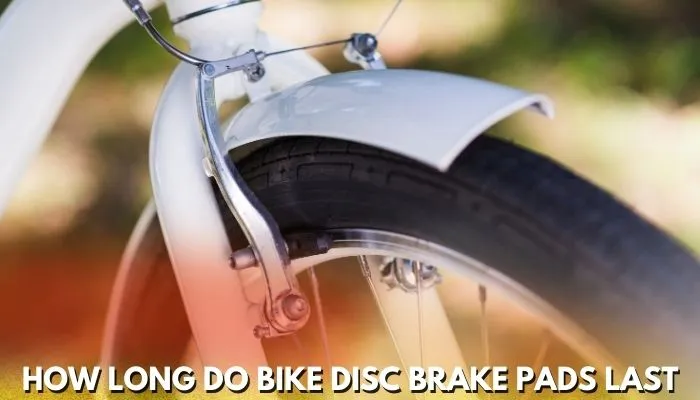
As a novice biker, you might assume that your maintenance costs, such as gasoline and machinery expenses, are modest. However, there are also several standards for bike maintenance that do need your consideration.
Your bike’s brake pads are one of them. Thus, “How long do bike disc brake pads last?” is a valid question. In reality, there are a lot of aspects that influence that. Everything from the kind of disc brake pad you choose to how you ride your motorbike and everything else in between.
Table of Contents
How Long Do Bike Disc Brake Pads Last
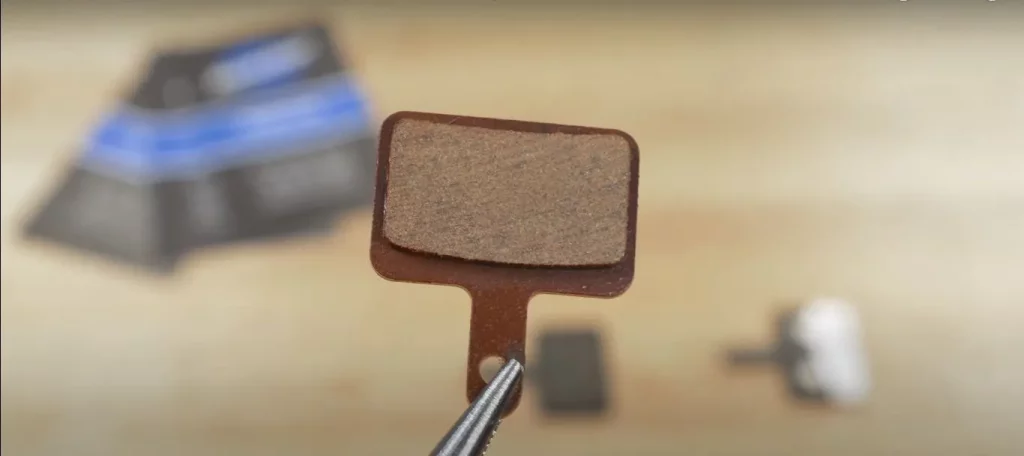
There are few things that can equal the joy of a good day of biking, whether you are ripping up a mountain route on your mountain dirt bike or sprinting through the neighborhoods on your road bike.
However, it’s essential to maintain your bike efficiently in order to have great bike days, particularly when it regards your braking, which may drive you to wonder how much disc brake pads survive.
Resin disc brake pads generally last anywhere between 500 and 700 miles, but sintered metal brake disc pads endure between 1,000 and 1,250 miles.
Your braking patterns, the territory you ride on, and the conditions you ride in would all have an influence on how many miles you eventually are out of your brake disc pads.
Factors that Affect the Lifespan of Disc Brake Pads
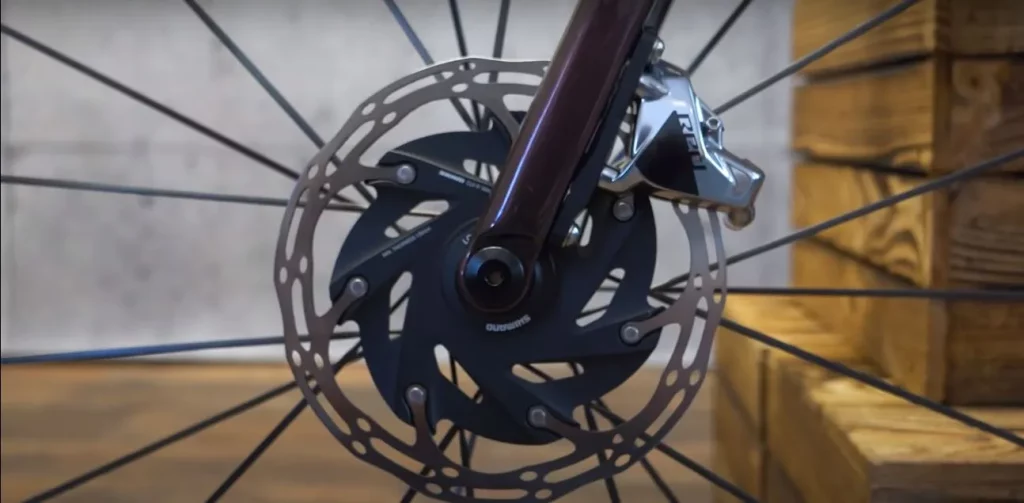
Even though bike disc brake pads have an average life expectancy of 500 to 1250 miles. Different aspects, such as the type of braking utilized, the location and climate patterns you typically ride in, and how you ride, can determine how long they will actually survive.
The kind of disc brake pads
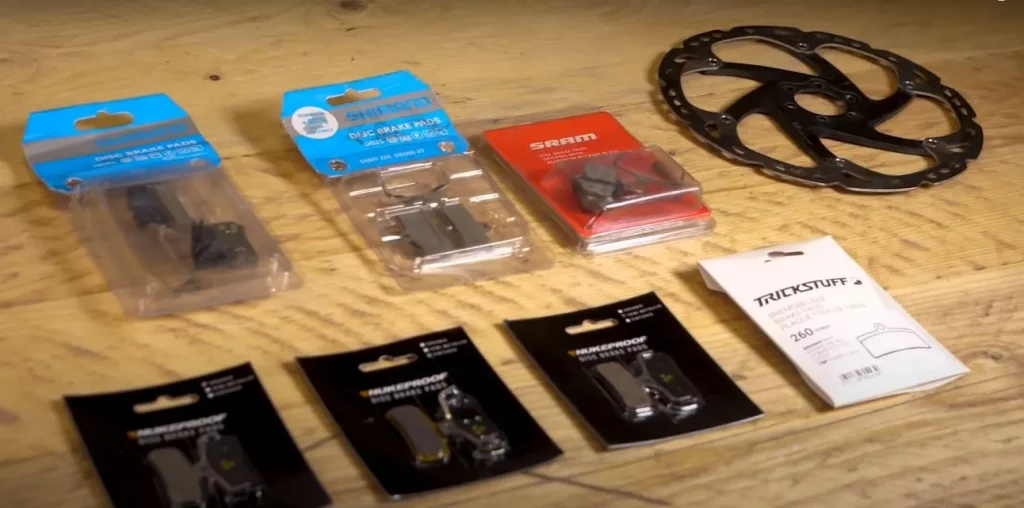
Bike disc brake pads generally consist of two primary classifications: organic and sintered.
- When driving on brake pads that are nearing the end of their service life, the potential for organic disc brake pads to burn down more rapidly can be problematic.
- On the other extreme, metallic, sintered disc brake pads have a history of lasting over and beyond. They have even been reported to keep their riders well after the time of their indicated expiry date.
Terrain
As a consequence of the large strain placed on brakes during biking on tracks, it may go without stating that the harsher your riding environment, the faster you may expect your bike’s disc brake pads to run out.
Due to the difficult terrain they frequently travel on, mountain bikes wear their brakes more often than road bikes, necessitating brake maintenance considerably more often.
Climate
An energetic biker is hard to restrict to a confined environment, regardless of the weather. It would be best if you took note of the fact that depending on the temperature or climate, you pedal in. Talking about how long do bike Disc Brake Pads last, some disc brake pads will perform more effectively and last more.
- Winter and Cold Conditions
Winter snowfall is now only a slight barrier to your bike trip, thanks to the advances in cycling gear. Some disc brake pads react favorably to this time of year in an attempt to grant you a comfortable and secure ride:
- Hydraulic disc brake pads have shown that they can operate at the highest standards of excellence at -15 degrees Fahrenheit.
- But mechanical, organic disc brake discs perform better in temps under -30 degrees Fahrenheit.
- Summer and hot weather
Heat friction occurs when you frequently slam on the brakes on your bike, regardless of how warm it is outdoors. This impact, meanwhile, doubles in a hot climate, which means your disc brake pads will absorb more injury.
Organic resin brake pads suffer in conditions of high temperatures and pressure, which accelerates the degeneration of your disc brakes and decreases stopping power. Instead, use sintered metal disc brake pads, which were shown to be far more beneficial for use in warmer temps and more challenging road conditions.
Patterns of Braking
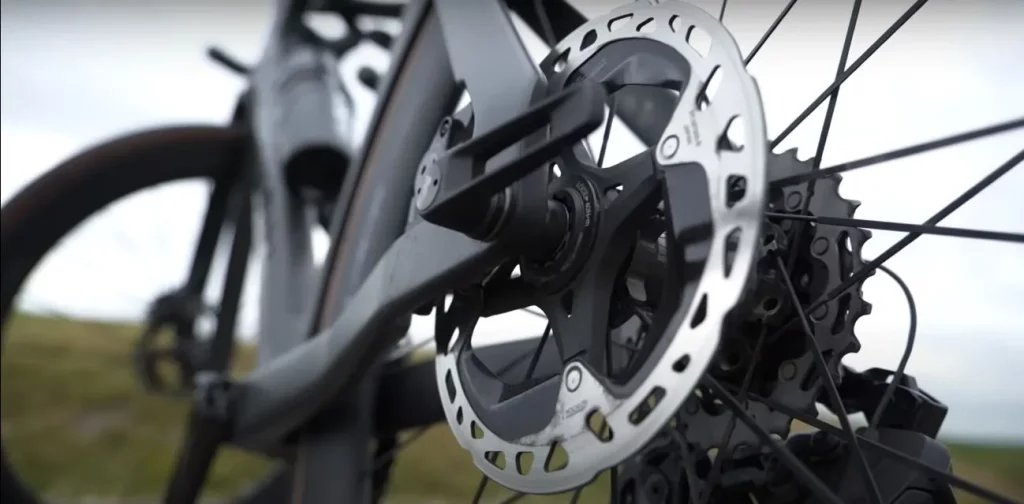
Due to regular usage of the brakes, which is frequently quite sudden and demanding on your brake pads, some riders can tear out their disc brakes to the stage where they have to be changed in as little as a few hundred miles.
When talking about how long bike Disc Brake Pads last, take into account the following braking recommendations if you want your bike’s disc brakes to last longer:
- Steer clear of bending forward when braking. The strain on the front brake will ease when you shift your weight to a vertical orientation or a slight backward lean.
- Place your hands and torso a little low on the bike to slow down as you enter a corner if you really need to slow down just to make it rather than engage the brake. Only lightly and carefully slam on the brakes if you have to.
- A little tap on the brake must be sufficient during rainy conditions. In the same way in which you would handle a normal car in the weather, begin to slow down sooner to reduce the stress on your tires and brakes.
Durability:
Do you know that the aim of brake pads is to stop these things? In order to endure pressure from forceful gears and abrupt brakes when needed, they are, of course, designed to be strong and durable. Rim brakes are not generally fragile, despite the fact that disc brakes are much more robust than they are. In fact, the sole purpose of brake pads is endurance.
However, it’s crucial to remember not to overuse the brake pads’ strong and durable material. No matter if the brake pads are comprised of organic compounds or sintered, the abrupt brake can and will tear them out.
When to Replace Disc Brake Pads
Picking the right time to upgrade your disc brake pads can take time and effort. If you want to keep yourself secure, it’s recommended to switch out your disc brake pads once they achieve a thickness of 1.5mm. However, the precise timing may vary based on if you are riding a touring bike or a mountain bike.
This is only a basic rule of thumb; however, relying on if you are utilizing organic or sintered brake pads, you could be capable of driving your disc brake pads a little bit further. We suggest regularly inspecting the state of your brake pads, particularly before a protracted trip or trail.
What Are the Prices of Disc Brake Pads?
Based on the brake pad kind you select and where you acquire it, the pricing you might expect to pay for disc brake pads may vary.
- The most cost-effective and simple option for you when you are on a limited budget is to use non-cartridge pads. Thanks to companies, which offer brake pads for as inexpensive as 7.00 dollars, there is no reason to keep off changing your disc brake pads.
- When it comes to cost and performance, cartridge pads are on the much more costly side of the scale. Every biker can afford to find a replacement for their cartridge brakes since pads from leading manufacturers can be purchased for as cheaply as 10 dollars. However, it’s likely to encounter slightly elevated cartridge pads from brands starting at 20 dollars or even more.
Take into account:
Additionally, you will need to consider those expenses if you choose to have an expert install your disc brake pads for you. Depending on the workshop and the kinds of brakes you require installed, the estimated price for this can vary from 35 dollars to over 200 dollars; this price could also include workers’ wages and assembly time.
A set of new brake pads from a local neighborhood retail shop will be much more costly than those ordered online. You can also acquire the brake pads available on the internet and have them fitted locally to save some bucks.
Choosing a new brake disc pad for a bike will be putting a manageable amount of stress on your wallet, irrespective of your credit card limit. When it comes to upgrading your brake pads, it really is better to stick with a reputable company rather than compromise for less.
Where to Purchase Disc Brake Pads
Both the online world and your local neighborhood shop have you prepared if you need to change your disc brake pads.
- Disc brake pads online.
For riders who have practical experience with bike commuting and are well-informed on what they want, options online are ideal for finding affordable options. If you’re searching for a simple, quick manner to get a fresh set of brake disc pads for the bike, an online website such as Amazon is a good place to begin.
However, going to a nearby bike shop is definitely the wisest course of action if you need to be more competent with bike maintenance and would like to support small businesses.
- Disc brake pads in a bike shop
When working with a neighborhood bicycle shop, you can have a skilled bike mechanic repair your disc brake pads and feel confident that the work gets done professionally. It will help you in saving you the trouble of getting your fingers dirty and providing you with the confidence that your forthcoming ride will be safe.
A bike technician can inform you of your options for brake pads so you can select the one that best suits your needs while you’re out biking. That is another benefit of consulting one.
FAQs:
Will my bike allow me to utilize two different pads?
There you go! We really like your thinking beyond the box. Why not, we say? Actually, there are two good reasons why it is a brilliant idea. One: You try out various pads to decide which one matches you the finest.
The second is that you utilize an organic brake pad for easy mobility and feeling and a sintered or semi-metallic brake pad for endurance as the rear brake pad. This is the finest of both situations!
Do brake pads require a warm-up period before they can work effectively?
Regarding the mathematics of friction, there is an interesting idea. Both yes and no are the appropriate responses. No, not for organic pads. For metallic and sintered pads, the answer is yes. Why? Due to the fact that resin is an insulator and metals transmit temperature.
Metallic brake pads won’t function as efficiently in cooler temperatures as organic ones, so this is yet another disadvantage. Choosing a semi-metallic brake pad, which is a mixture of organic and sintered brake pads, is one method to sidestep this issue and still retain the endurance of metal-based elements.
Having said that, as we don’t suddenly start constantly braking after getting on our bikes, the first warm-up period needed by the metallic brake pads shouldn’t be too troublesome.
Do bicycle disc brakes deteriorate with time?
The extensive use of disc brakes can be linked to the obvious advantages they have had over rim brakes, such as better performance in extreme weather conditions and more specific brake deployment. But they will wear out more quickly because they weigh more than rim brakes.
Should disc brakes on bicycles be rubbed?
Your disc brakes may be rubbing for one of two reasons. The brake rotor may not be straight, or the brake calipers may not be properly aligned. Or you are dealing with both issues. Make sure you can freely spin the wheels by putting your bike on a platform or having a willing buddy hold it.
Conclusion:
You might be thinking how long do bike Disc Brake Pads last? Well, now you have your answers. When employing metallic, sintered brake pads, the average life span is 1,000 to 1,250 miles, while resin disc brake pads can generally endure 500 to 700 miles before needing to be replaced.
While this is a reasonable guess for the ordinary rider, the distance you get through your brake disc pads may vary considerably depending on the terrain you ride, your riding skill, and the weather where you reside.
